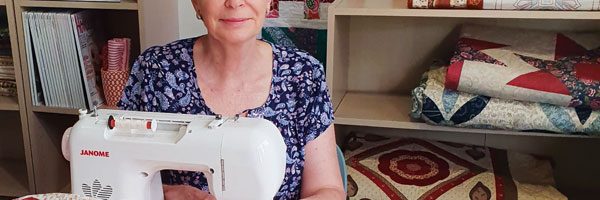
Rulers and Templates with Anita Ellis
My last article was all about the ins and outs, and the dos and don’ts, of quilting with rulers. I hope you managed to read it and take in some of the information. It can seem tricky at first, but remember that the longarm quilter you may be comparing yourself to will have many years’ experience behind her. That said, let’s go forward with a smile and a can-do attitude. Ruler quilting is fun and, in my opinion, easier to master than free-motion quilting. Today I am going to be talking about how to choose different rulers and templates for your quilting style. There is a lot of choice out there and it helps to narrow those down to templates that really suit you.
What makes a good quilting ruler?
- Let’s identify what makes a quilting ruler that is easy to use, accurate and versatile.
- The correct thickness — last issue we discussed the importance of the right thickness of the ruler. So we will take it as a given that you have chosen the correct thickness of template for your machine set-up.
- Good-quality etched lines that are accurate and can be seen are very important. These are going to keep you on track with your line spacing.
- Reference lines that mean something; by that I mean the reference lines are useful to keep your quilting lines evenly spaced. Look out, too, for angle lines that keep you honest with your piecing lines. Not all rulers are made equal. Take a good look at those reference lines before you make a purchase. If they are not clear to see and don’t make sense to you, get more information before you buy.
- Does it have more than one purpose? The more things I can do with a template, the more ticks it gets from me. It can be a little pricey to get started so you want to get the most for your money.
- Is it a good fit for your hand? Not too big and not too small, just right!
- Does it feel well-made and sturdy? There are many inferior products on the market, often counterfeited goods. Do the right thing and purchase directly from the designer or ruler company.
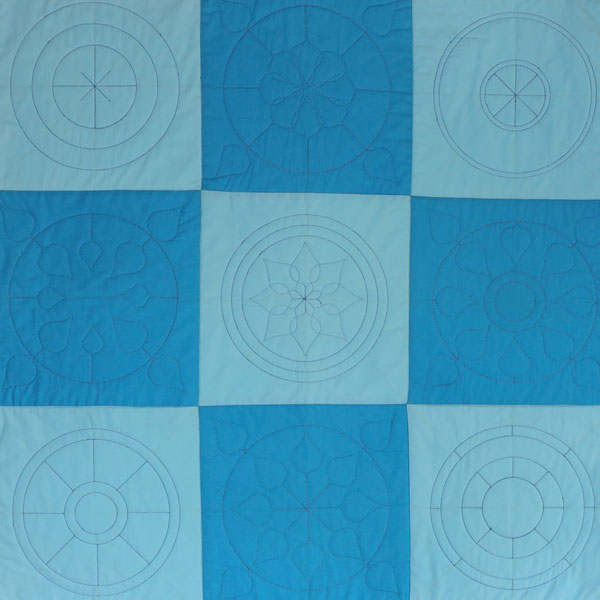
Now we get to pick some rulers
1. Think about the style of quilting you want to do
Think about what your style is. For example, there is no value in heading out and purchasing a heap of flower templates if you only make very masculine quilts. Likewise, if you only like geometric quilting designs, then curvy templates will not see much use either. Keep these thoughts in your mind as you build up a collection. Remember, the only template of value to you is the one that you will use, preferably in lots of quilting situations.
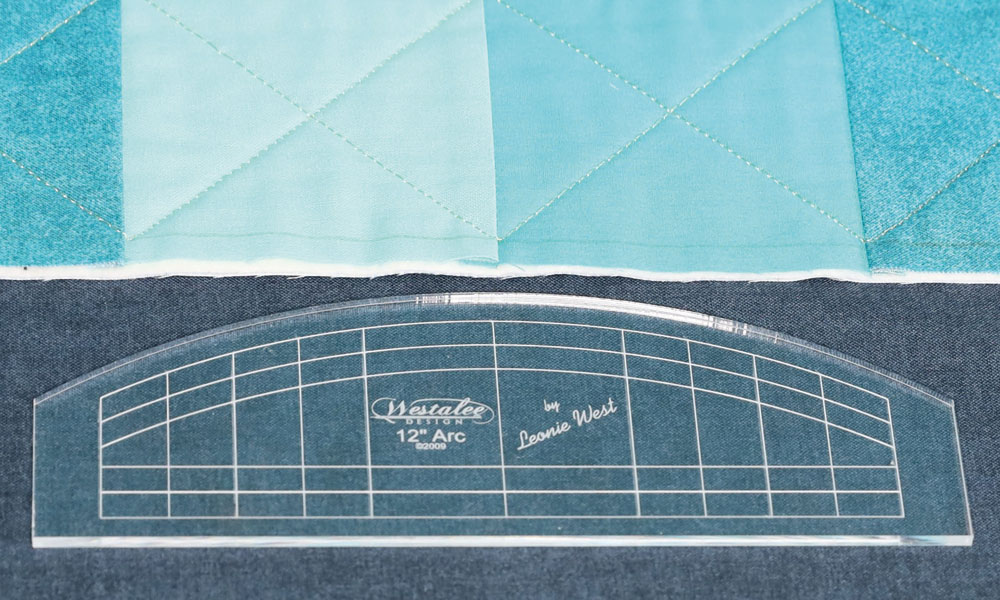
2. Keep it simple, start with a straight ruler
Keep it simple and start with a straight ruler. You will be blown away with what you can do with it. It will be so much easier to do intricate straight-line designs using a ruler rather than a walking foot. You just turn your ruler, not the whole quilt, each time you want the design to take a new direction.
Size matters here. A straight ruler that fits comfortably in your hand will create much more accurate stitching lines than one that is too long and wobbles about off the edge of your extension table. It is often thought that a longer ruler will help with the longer straight lines. I think it can hinder accuracy as it is harder to handle. The important thing to remember is to check that the ruler is lined up behind the foot, alongside the stitching already done, and in front of the foot as you move it along to complete a line longer than the ruler itself.
My favourite straight ruler is the Westalee Design 12in Arc Template from Sew Steady. It is actually 6in long but the arc is part of a 12in circle. One side is straight and the other is an arc. It has a nice feel in the hand, and I use it every day and on every quilt I make. It ticks all the boxes for clear etched reference lines, too. Of course, there are others to choose from and I suggest you look at all options to see what suits you best.
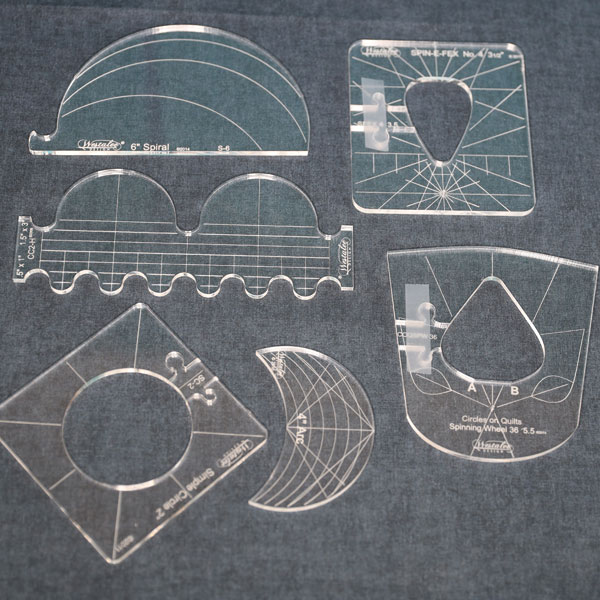
3. Choose a starter set of templates to explore your options
Often manufacturers will put out a small collection of templates to allow you to try out several different styles of design. Some templates rotate to create designs similar to the Spirograph diagrams you may remember from childhood. Others create rows of clamshells and border designs. These starter sets are very versatile and are a great option when you are beginning. With them, you can try out various templates on different areas of your quilt and decide which shapes you like working with for future purchases.

4. Add circles
The next purchases that are going to give you great quilting value are circles. The simple circle shape can be repeated and overlapped to make really complex and lovely designs, either using the whole shape or just a segment of it. Do remember it is much easier to stitch a cut-out inner circle than the outside edge of a solid circle. You have more room for your hands to hold the template and the accuracy is improved. As a longarmer I used to use solid circles and quilt the outside edges and that was fine. As a domestic machine user, I much prefer the cut-out circles so that I can hold the template easily on the edges as I stitch. Many quilts have straight lines and geometric piecing, so the circle quilting often complements the piecing perfectly.
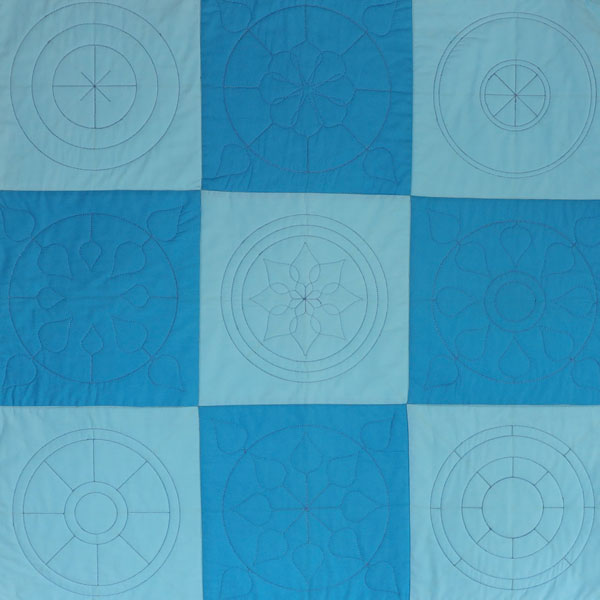
5. Spinning flower designs
Who doesn’t love flowers on a quilt? I love them; even if they are not your thing, keep reading as you may be surprised by what you can do with the shapes.
There are many templates that spin and make flower shapes. This is very useful for your quilts, whether that is joining up a random placement of motifs with a meander to create an all-over pattern, or detailed custom quilting.
The other great thing about this style of template is that they are often made up of different curves that you can use just a part of. So the quilting designs will not resemble flowers at all, but may end up as a geometric pattern of arcs and points.
I really like to buy sets of templates when I can so that you get the same shapes but in different sizes. We can see a great example of this with flowers. When do you see a bunch of flowers with all the same-size petals and buds? Nature can teach us a lot about design. The graduated shapes also allow for more intricate and layered design possibilities. Plus, there is always the fact that our pieced blocks vary so much in size that it is ideal to have a variety of template shapes and sizes to fit them.
There are so many options out there, so now you can go away and start to create your own quilting designs using just a handful of rulers to create accurate, beautiful shapes you will be proud of. Pick your collection wisely and you will have many choices when it comes to finishing your own quilts. Most importantly, be kind to yourself once you start using them; it takes a bit of time and practice, but the rewards are endless.
Next time I will be taking the discussion of rulers one step further and looking at how we can combine ruler work with free-motion work. Until then … happy quilting.



